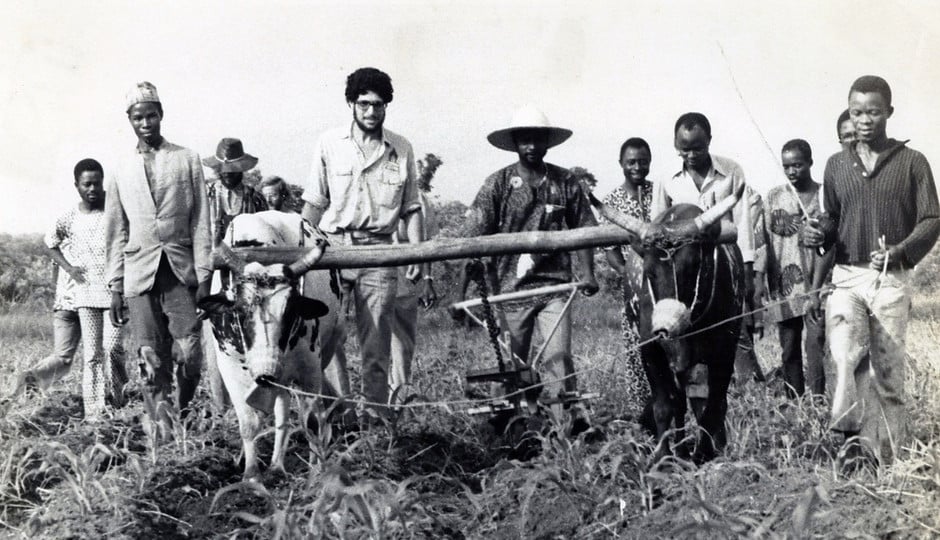Presented by Museum of the Peace Corps Experience and American University Museum

PEACE CORPS AT 60
INSIDE THE VOLUNTEER EXPERIENCE
On January 20, 1961, President John F. Kennedy issued a challenge to all Americans: “Ask not what your country can do for you—ask what you can do for your country.”
Two months later American University hosted a National Conference on Youth Service Abroad, organized by students from AU, the University of Michigan, and the National Student Association. Nearly 500 participants, representing 300 schools in 45 states, gathered in Washington, DC, to discuss the goals, mission, and methods of a new Peace Corps.
The original 1961 legislation that created the Peace Corps laid out three goals:
1. Help the people of interested countries meet their need for trained men and women.
2. Help promote a better understanding of Americans on the part of the people served.
3. Help promote a better understanding of other peoples on the part of Americans.
The 30 individuals whose objects and stories we showcase here represent a sampling of the nearly 240,000 volunteers who have answered Kennedy’s call to serve since 1961. This exhibition illuminates how the Peace Corps has offered alternative ways to advance peace and promote international friendship.
Today we confront unprecedented global challenges, including the coronavirus pandemic, climate change, and an immigration crisis. In March 2020 the Peace Corps evacuated 7,300 volunteers from 61 countries. Now the agency has an opportunity to return volunteers to the field with a new sense of purpose. How will the Peace Corps, at 60, create positive change in our complex world? How should it address concerns around racial, economic, and asymmetrical power dynamics? The Peace Corps must find a way to remain relevant in an ever changing environment.
Peace Corps at 60: Inside the Volunteer Experience explores these challenges through the lens of the third Peace Corps goal. The objects these volunteers chose to keep embody memories of their Peace Corps experiences. The stories behind those objects reveal the reciprocal relationships between volunteers and their country hosts. These relationships have always been central to the Peace Corps experience and essential to the agency’s role and service. Micro-memoirs accompanying each object tell these stories, providing a window into the agency’s past and lessons for its future.
Return home
Image: Peace Corps volunteer Harry Birnholz (Benin 1974-77) and local farmers try a weed-management farming technique using animal traction.
Museum of the Peace Corps Experience
PO Box 2427
Oregon City, OR 97045
USA
The Committee for a Museum of the Peace Corps Experience is a 501(c)(3) private nonprofit organization. Tax ID: EIN # 93-1289853
The Museum is not affiliated with the U.S. Peace Corps and not acting on behalf of the U.S. Peace Corps.
Museum of the Peace Corps Experience © 2024. All Rights Reserved.